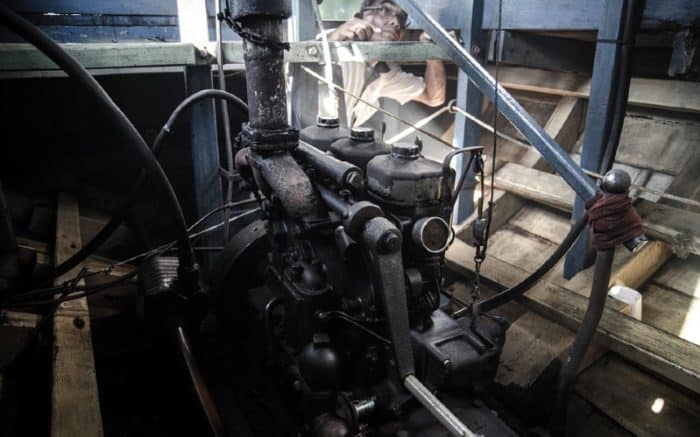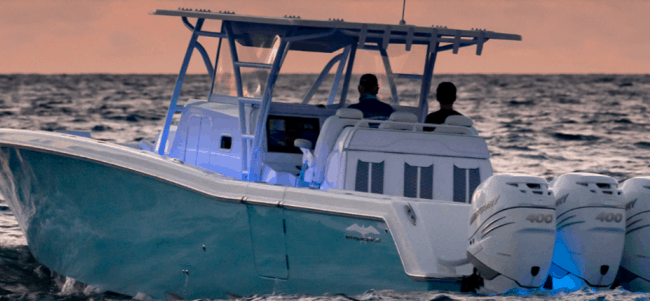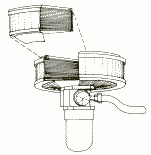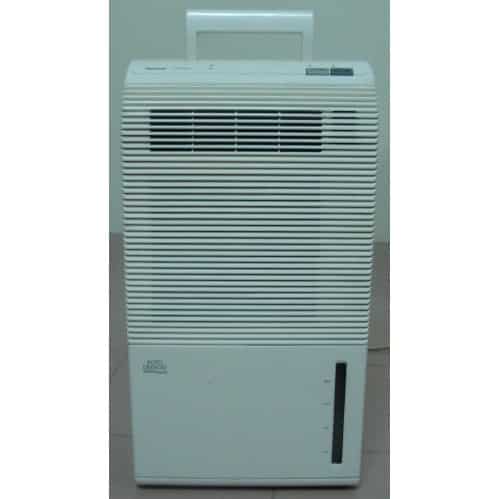The Importance of Boat Ventilation
Ventilation is rarely something most of us give a second thought to. But on a boat, it can literally be a life or death issue. How you ventilate your boat is of vital importance. It’s also something that must follow specific, legal guidelines as well. Because of that, you’re going to want to know exactly how and why your boat needs to be ventilated. Let’s take a look at boat ventilation and what you need to stay safe.
Why Fresh Air is Important for Cabin Ventilation
Boat ventilation is nothing new. In fact, it dates all the way back to April 25, 1940. Any boat powered by gasoline would be required to have adequate ventilation. This was required by law, and still is.
Fast forward to 1982 and the law was changed again. At that time it was adjusted again. Now it would distinguish between natural ventilation and powered ventilation. So as of 1982, if a boat had installed fuel tanks or an enclosed engine, powered was the rule. Natural ventilation was no longer legal for such engine configurations.
That means any boat with an enclosed engine or permanent fuel tanks up to today. They must legally use powered ventilation systems.
But what’s the reason? What’s that fresh air for? Simple. It’s for air flow. Your ventilation system exists to disperse gasoline fumes.
Most boats, even larger boats, can allow gasoline fumes to build up. Without something like a blower fan or a dorade vent, that can become dangerous. Fumes from fuel are highly explosive and flammable. Not to mention the danger to health.
There’s also a second reason to ventilate your boat. Humidity and moisture are notorious in the bilge area. Over time, this can lead to mold and mildew in enclosed spaces. That’s a secondary health risk above the fire issue from fuel fumes. Plus it can effectively destroy your boat’s hull over time. Mildew is notorious for building up on anything from wood to plastic to fiberglass.
Good air circulation with bilge blowers or other powered blowers is key. It will keep those enclosed areas dry and free from dangerous fumes.
Powered Ventilation Systems vs Natural Ventilation Systems
You can still use one of two ventilator systems, depending on your kind of boat. Natural ventilation systems are not powered. They require at least two ventilator ducts to function.
Your boat will require at least one exhaust duct installed. It has to extend from outside in the fresh air to the lower part of the bilge. It also needs an air intake duct. This one has to extend midway to the bilge at the very least. Or below the level of the carburetor air intake.
The ducts in a natural ventilation system should be covered as well. These cowl vents increase airflow when the boat is in motion.
The alternative to natural ventilation is powered. These are far more common, especially in modern boats. Powered ventilation systems use blowers to circulate air. The fan blades spin to force air to flow in and out of cabin spaces.
An intake duct for an exhaust blower needs to be above the normal level of the bilge water. But it needs to be in the lower third of the compartment. That way fumes are not allowed to build up too far.
Is a Powered Ventilation System the Best Choice?
Obviously there’s a major difference between powered and natural ventilation systems. Some might feel the natural way sounds better. Less power consumption is always a big plus on a boat. But natural is definitely not as effective as power. The problem with natural ventilation is air movement. If a boat has been sitting still, air can stagnate. Fumes can build up and ventilation will still be power. In motion, air flow will increase and that’s good. But it’s in those crucial moments before a boat is in motion when this is dangerous.
There’s a good reason why blowers should be turned on for four minutes before you turn on your boat engines. The longer a boat sits the more likely it is to have built up fumes. Natural vents are not good at eliminating fumes that build up like that. That’s why boats that have enclosed engines need powered ventilation. The same goes for installed fuel tanks.
Natural ventilation is well suited for smaller boats. Ones that do not have fuel sitting in tanks over an extended period of time. If the fumes can’t build up, ventilation of this kind is less of an issue. That makes sense, right?
All things being equal, powered ventilation is a far safer method of boat ventilation. It’s a more active process and you’ll know it’s working.
In addition to ventilation, there are other tools and methods to prevent fires on a boat. Let’s take a look at a couple of them.
The Four Minute Wait Period
If your boat was built after July 31, 1980 and it has exhaust blowers in the engine compartment, look for a sticker. It must have this sticker near the instrument panels. It should read:
WARNING
GASOLINE VAPORS CAN EXPLODE.
BEFORE STARTING ENGINE OPERATE BLOWER FOR 4 MINUTES AND CHECK ENGINE COMPARTMENT
FOR GASOLINE VAPORS.
As we mentioned earlier, this four minute period is essential. Four minutes is enough time to thoroughly ventilate the area. You can attend to other tasks on deck while this four minutes is passing.
In 2017 alone, the Coast Guard logged 164 fuel-related explosions on boats. So it’s not just a theoretical problem or something that is being overhyped for no reason. These explosions can lead to serious damage or total destruction of a boat. When docked, that can extend to other boats as well. That means you could be on the hook for damages to other people’s property. But worse of all is the potential for serious injury and death.
Backfire Flame Arrestor
Just like a car engine, a boat engine can backfire. Any boat that is fueled by gasoline needs to have a backfire flame arrestor equipped for this reason. With the exception of outboard motors, that is. The backfire flame arrestor needs to be installed on a carburetor to function.
Attached to the air intake with a flame tight seal, this device can prevent backfires. A backfire occurs when combustion takes place outside of the cylinders. Backfires in an area rich with gasoline fumes can lead to explosions. This is another reason that a four minute venting period is needed. If you start an engine immediately the risk is very high. With no backfire flame arrestor, a backfire could occur. This means a small explosion out of the sealed cylinders of the engine. That can ignore the fuel fumes and cause the saturated space to explode. If enough fumes have built up this could destroy an entire vessel. If you are on the boat at the time, it could be fatal.
Proper maintenance of a backfire flame arrestor is important. Those installed in your boat must meet certain requirements. They must be:
- In good and serviceable condition.
- USCG–approved (must comply with SAE J-1928 or UL 1111 standards).
You should inspect them on a regular basis and clean them as necessary. They can develop built up which impedes their ability to work. Look for holes in the grid screen. If there are any, the device will not function properly. Likewise, check for cleanliness. If it’s starting to go black, it may require cleaning or replacement. Cleaning is a relatively easy process. You just need to remove it and then wash the heat dissipation grid. Soap and water is all you need. Then allow it to thoroughly dry before reinstalling. Double check your connection to make sure it’s flame tight.
Look for oil or gas in the grid as well. None should be there. Finally, make sure it is properly attached.
Dehumidifiers
As we said before, there is a second reason for good ventilation on a boat. Preventing moisture and humidity is also important. Condensation is notorious on boats. The result can be mildew and odor. This can graduate to hull or deck damage over time. That’s part of the reason keeping a clean bilge is necessary.
A small, portable dehumidifier can be a lifesaver on a boat. This is especially true if your boat has issues in damp weather. Sometimes on humid days, or even if you’re cooking in the cabin, moisture builds up.
The most important thing to remember with a dehumidifier is to maintain it. A poorly maintained dehumidifier can backfire on you. It can become a breeding ground for bacteria and, in turn, more mold and mildew. Make sure you empty the reservoir and clean the filters often. If you do that, moisture levels stay down even better than they will with ventilation. That leads to the safe and dry boat you want.
Remember to be smart when shopping for dehumidifiers. If you’re using one while your boat is docked it’s less of an issue. But if you want to use it on the water, then you need to be more careful. Dehumidifiers can get clunky. They take up room and use a lot of power sometimes. You’ll need to shop for a portable unit that draws a reasonable amount of power.
Most dehumidifiers have large reservoirs. If you’re using blower fans to circulate air, a smaller dehumidifier will probably be up to the task. The two work together to keep air moving and prevent moisture build up.
Finally, remember to clean your bilge regularly. Don’t let water sit for too long. This prevents mold and mildew as well as excess humidity. Plus, if your bilge is contaminated, it cuts down on fumes as well. It’s an awful job and no boater likes it. But everyone prefers a clean bilge to a dirty one. There are a number of products for cleaning your bilge to help make the task easier.
The Bottom Line
Boat ventilation is an integral part of boating. You are responsible for making sure all your ducts and vents work every time you head out. Use that four minutes while the blowers are running to inspect the whole system. Check those hoses, hatches and vents to make sure they are unobstructed. Make sure all cabin fans are working. It’s a small part of your pre launch ritual, but vital. If anything is blocked, get it cleared. If things are broken, get them replaced as soon as possible. It’s for your safety as well as the safety of everyone around you. Gasoline engines are serious machines and need to be respected.
As always, stay safe and have fun.
Categories: Boats, nauticalknowhow

















